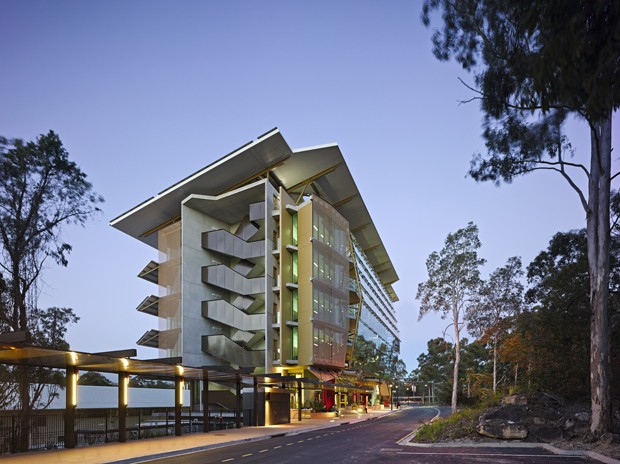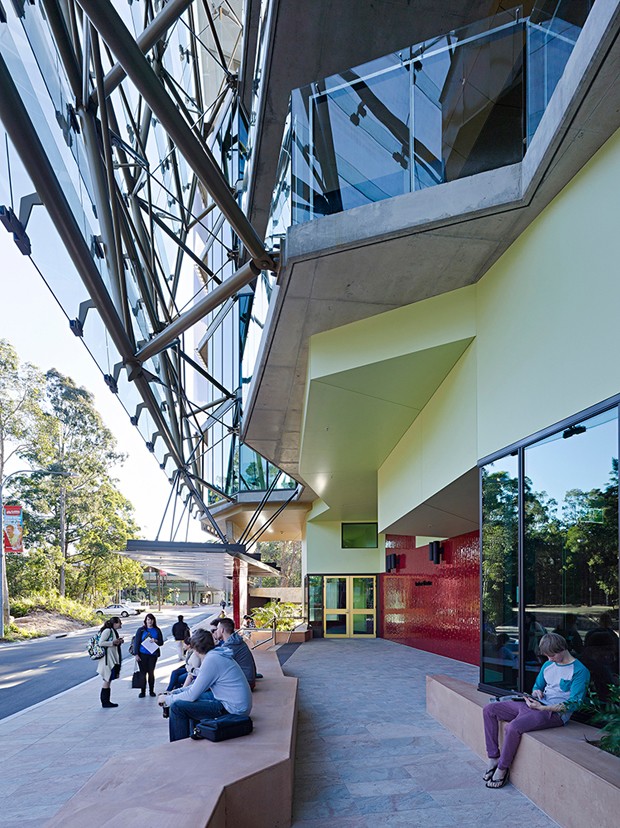The Sir Samuel Griffith Centre is the first building worldwide to convert solar energy into hydrogen. This technology is a major breakthrough as it enables the energy to be stored for long periods overcoming solar energy’s debilitating shortcoming.
It was conceived by researchers within Griffith University as a means of energising remote communities anywhere. The system is integrated into an architecture that fosters research collaboration and external social engagement via a tensegrity-supported glazed rainshield frontage that naturally ventilates along the length and height of the building.
The result is a completely self-sustaining, zero carbon teaching and research building without precedent renowned for its social engagement and transparency. The building also combines all of the university’s previously disparate environmental research organisations into one collaborative building, while exposing the research to the wider campus and its visiting public.
Key initiatives:
- The Sir Samuel Griffith Centre employs the World’s first use of solar hydrogen technology to create a fully self-sustaining building. The technology was developed by the university’s own researchers with their aim to enable remote communities to possess their own long term sustainable energy supply
- The system converts solar energy into hydrogen (as metal halides) which is stored in fuel cells and deployed on demand
- The key component of this design is a fully naturally-ventilated circulation spine that is protected by a tensegrity-supported glazed rainshield forming also multiple collaboration zones visible to the public realm
- The roof is an extensive canopy that is covered by 1124 solar photovoltaic cells and faces direct north at the ideal angle for solar gain
- 6 Star Green Star V1 Rating for Education Buildings, and has been submitted for as built rating


Photography by Christopher Frederick Jones

